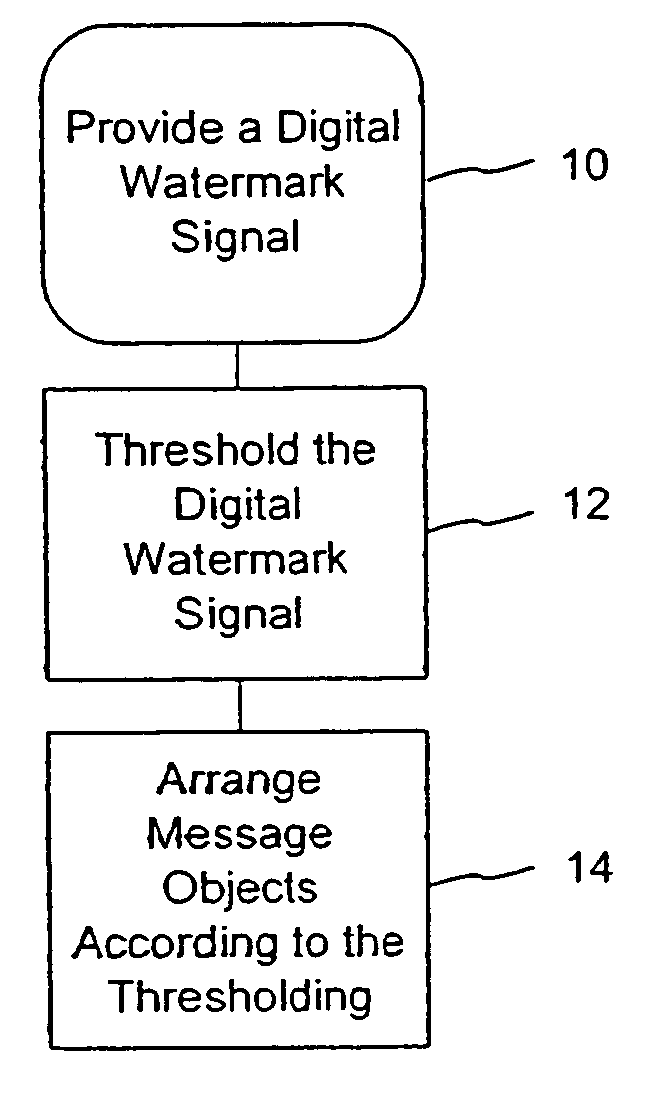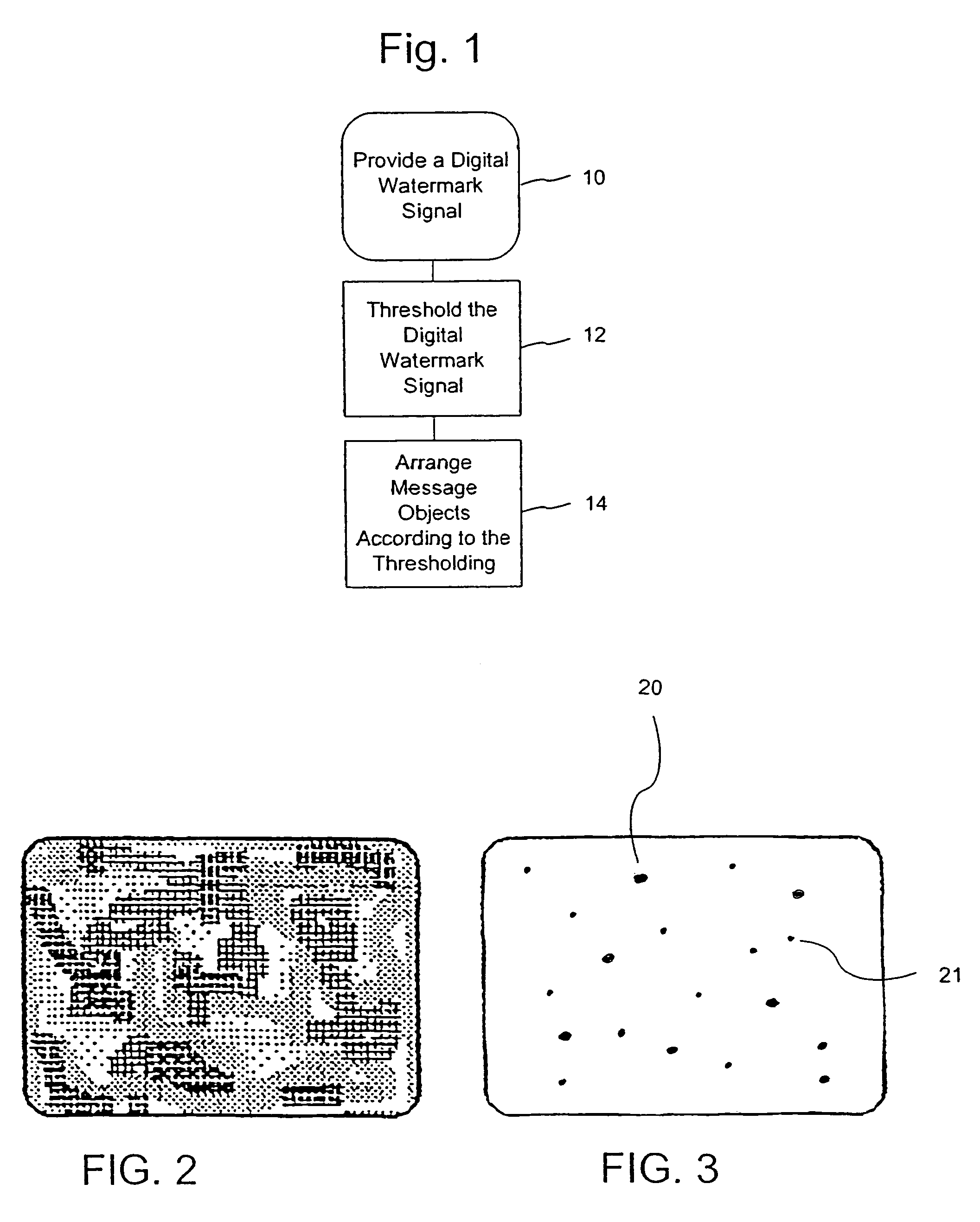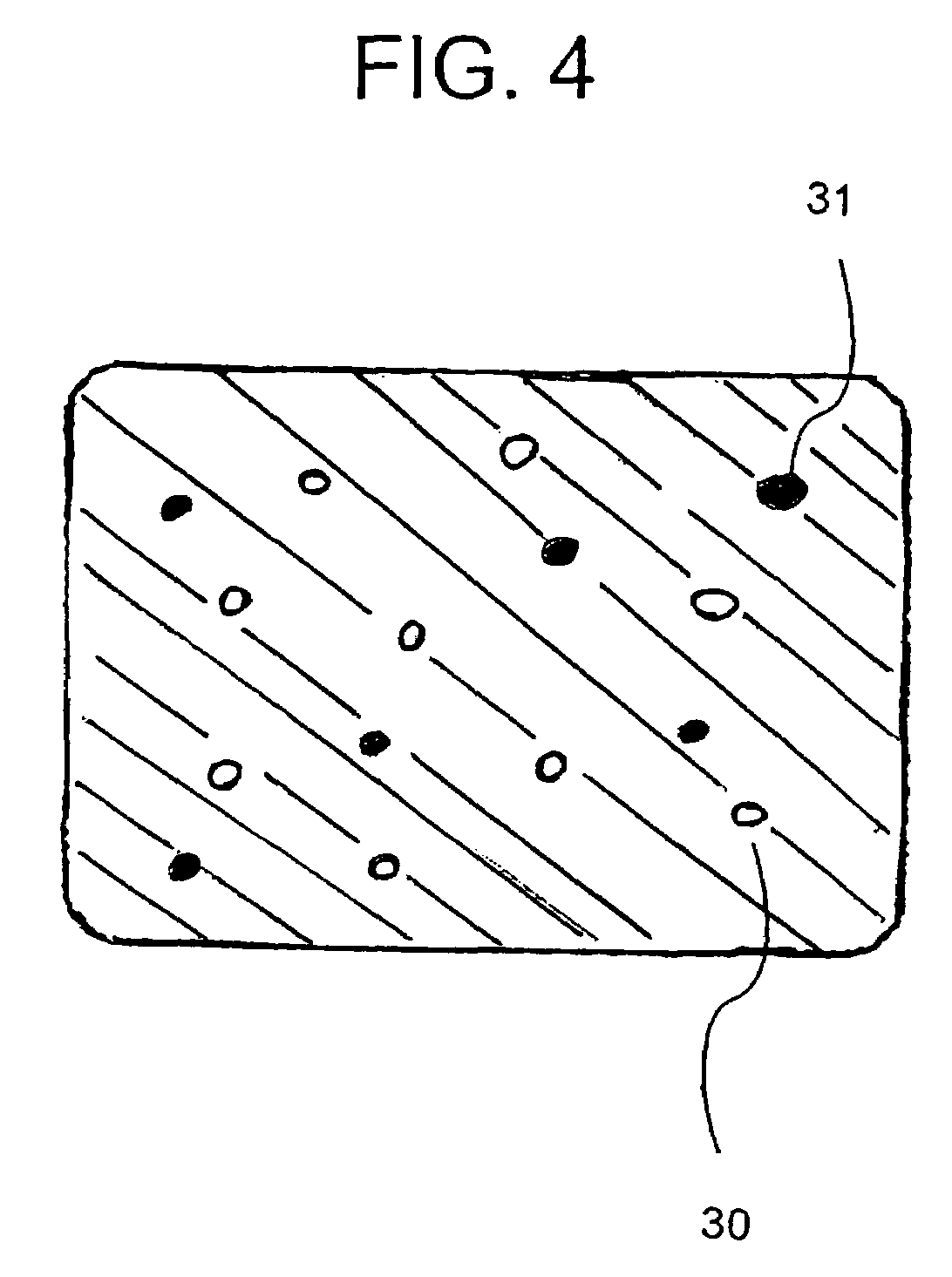Data hiding through arrangement of objects
a technology of objects and data, applied in the field of steganography and data hiding, can solve the problem of artwork that requires little, if any, further modification
- Summary
- Abstract
- Description
- Claims
- Application Information
AI Technical Summary
Benefits of technology
Problems solved by technology
Method used
Image
Examples
Embodiment Construction
[0019]We have found that the arrangement of objects within an image can be used to convey information—which is otherwise imperceptible to a human viewer. We arrange so-called “message objects” to convey or represent a steganographic signal (e.g., a digital watermark). We define a message object broadly herein as including an information carrier, an image object, a shape, an object or collection of objects, a pixel or group of pixels, a contrast or color / gray-scale area, etc. A set of message objects is arranged within an image or area to form a steganographic message. A few examples are provided below.
[0020]Consider a drawing illustrating a Dalmatian puppy. The puppy has a white coat complimented with black spots. An artist (or digital editor) can arrange the spots—an example of a message object—so as to convey a hidden or steganographic message. More practical, however, is to align the spots according to a predetermined steganographic signal and then sculpt or design the puppy arou...
PUM
 Login to View More
Login to View More Abstract
Description
Claims
Application Information
 Login to View More
Login to View More - R&D
- Intellectual Property
- Life Sciences
- Materials
- Tech Scout
- Unparalleled Data Quality
- Higher Quality Content
- 60% Fewer Hallucinations
Browse by: Latest US Patents, China's latest patents, Technical Efficacy Thesaurus, Application Domain, Technology Topic, Popular Technical Reports.
© 2025 PatSnap. All rights reserved.Legal|Privacy policy|Modern Slavery Act Transparency Statement|Sitemap|About US| Contact US: help@patsnap.com



